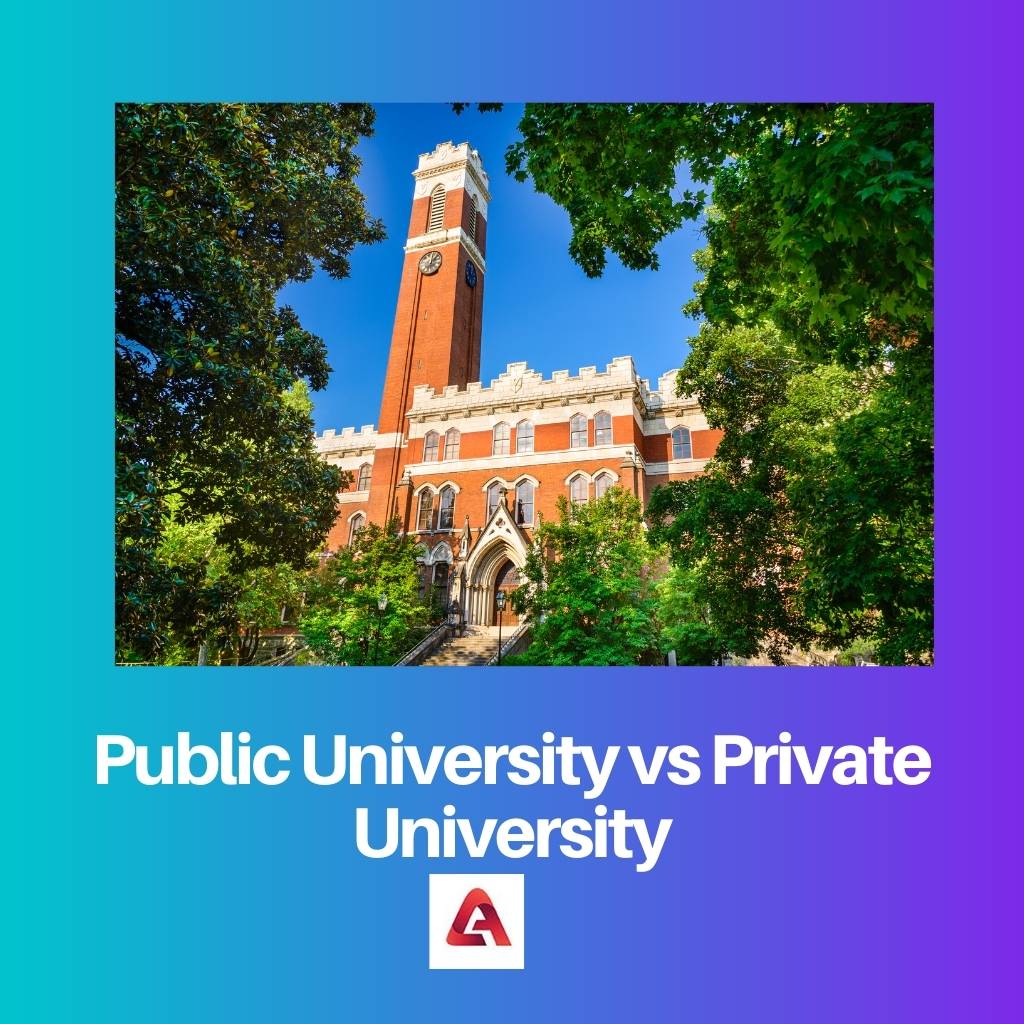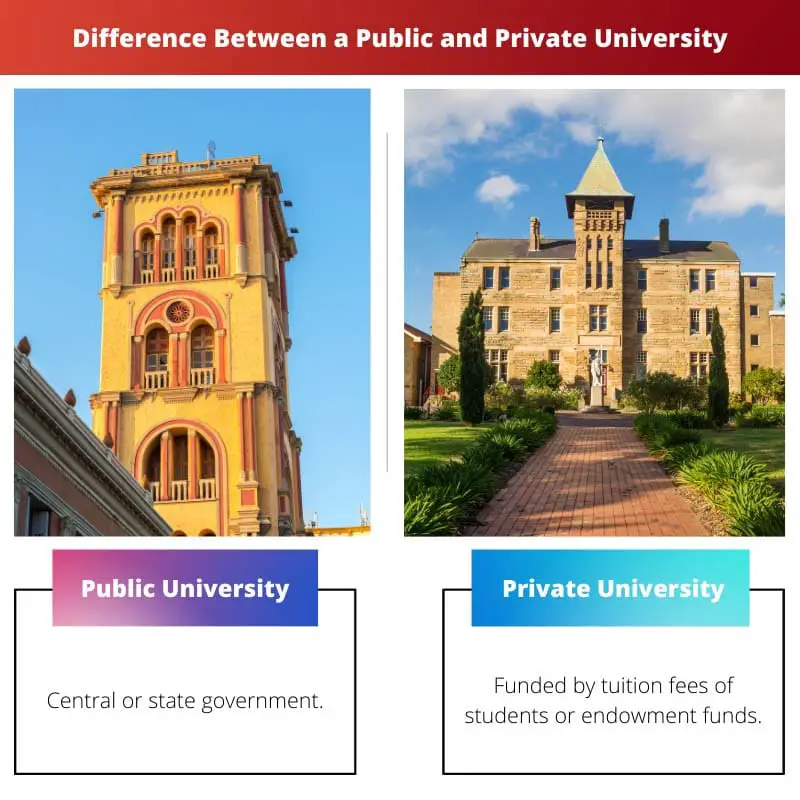In college rankings, public institutions are ranked lower than private schools, and admissions standards are frequently less severe. The purpose of this article is to compare and contrast public and private universities.
There are private for-profit institutions in the private sector that are run like businesses to generate revenue. Numerous characteristics distinguish public universities from private schools.
The key is to figure out which factors are most important to you and then act accordingly.
Key Takeaways
- The government funds public universities and offers lower tuition fees to in-state students, while tuition fees and donations fund private universities.
- Public universities are larger and have a wider range of programs and courses, while private universities have smaller class sizes and more personalized attention.
- Public universities are more accessible to students from lower-income families, while private universities may offer more financial aid to students based on merit.
Public University vs Private University
The difference between a public and private university is that the federal or state governments frequently fund public universities. However, on the contrary, Private institutions are sustained through student tuition fees and endowment monies. They do, however, receive private donations and contributions. Because the state government subsidizes public universities, students pay substantially lower tuition rates, which are higher in the case of private universities.

Public universities offer educational options that are both affordable and effective. Because public institutions enroll a larger number of students, the odds of receiving scholarships and financial aid are substantially lower in statistics.
In terms of class size, campus size, and even student body population, public colleges are larger and larger. Public universities are underfunded and have substandard facilities.
Private universities have far superior facilities and equipment than public universities. The tuition prices imposed on students at private universities are quite exorbitant, as the institutions’ operation is dependent on student tuition payments.
The cost of attending a private university or school is very high. Students at private universities can benefit from enticing financial aid. They do, however, offer fantastic scholarships.
In terms of class size, student body number, and other factors, private institutions are smaller than public universities.
Comparison Table
| Parameters of Comparison | Public University | Private University |
|---|---|---|
| Funded by | Central or state government. | Funded by tuition fees of students or endowment funds. |
| Tuition fees charged | Tuition fees charged is much low. | Tuition fees charged is high. |
| Cost of education | Provide cost-effective methods of education. | Highly expensive to attend. |
| Financial aid provision | Provide less financial aid. | Provide more financial aid. |
| Size | Larger in terms of class size, campus size and student body population. | Smaller in terms of campus size, class size and student body population |
| Equipment and infrastructure | Poor equipment and infrastructure. | Much better and advanced equipment and infrastructure. |
What is a Public University?
The federal government or a state government funds public universities. As a result of the state government subsidizing public colleges, students pay substantially lower tuition rates.
Public colleges offer educational opportunities that are both cost-effective and efficient.
Because public colleges enroll a larger number of students, data show that the odds of receiving scholarships and financial aid are substantially lower. In terms of class size, campus size, and even student body number, public institutions are larger than private universities.
In general, public universities are underfunded and have substandard facilities.
By legislation, public schools and universities must be secular, which means they are not affiliated with any religion. Public institutions, on the other hand, provide a considerably wider range of coursework and degree programs.
A public university may be preferable for students who value athletics as an essential component of their college experience.

What is a Private University?
Private universities are sustained by tuition fees and endowment monies paid by students. They do, however, get gifts and contributions from individuals.
The cost of attending private universities and institutions is extremely high. Private universities have far superior infrastructure and equipment than public universities.
The tuition fees imposed on students at private universities are extremely exorbitant, as the institutions’ functionality is dependent on students’ tuition fees.
Students who are certain about what they want to study can benefit from visiting private universities with a good reputation in their profession.
Students at private universities have access to enticing financial help. They do, however, provide fantastic scholarship opportunities.
In terms of class size, student body number, and other factors, private institutions are smaller than their public counterparts. Many private universities, such as liberal arts colleges, offer just a limited selection of academic majors.

Main Differences Between a Public and Private University
- Public universities are funded by the central or state government. On the other hand, by the student’s tuition fees and endowment funds, private universities’ funding is supported. However, they also receive donations and contributions from private parties.
- The state government subsidizes public universities. Hence the tuition fees charged by students are much low. On the other hand, the tuition fees charged to students in private universities are highly expensive, as the functionality of such institutions depends solely on students’ tuition fees.
- Public universities provide cost-effective methods of education. On the other hand, private universities and institutions are highly expensive to attend.
- The chances of scholarships and financial aid offered by public universities are much less in statistics, as more students are enrolled in public universities. On the other hand, private universities offer attractive financial aid to students. However, they offer amazing scholarship rewards as well.
- The size of public universities is larger and bigger in terms of class size, campus size, and even student body population. On the other hand, the size of private universities is smaller than its counterpart in terms of class size, the population of the student body, etc.
- Public Universities are less equipped, and the infrastructure is also poor. On the other hand, the infrastructure and equipment of the vote universities are way better than public institutions.

- https://www.emerald.com/insight/content/doi/10.1108/09604520310484707/full/html
- https://books.google.com/books?hl=en&lr=&id=udCFAgAAQBAJ&oi=fnd&pg=PP1&dq=private+and+public+university&ots=QqWrrRsK4R&sig=0wKZD0UsqITetrVxhalUVdchpWE

Thank you for outlining the key differences between public and private universities in such a clear and detailed manner.
The financial aid comparison between public and private universities is an essential aspect of decision-making for prospective students.
I appreciate the thorough understanding of the facilities and equipment differences between public and private universities in this article.
Thank you for this comparison of public and private universities. It is very interesting to note the differences in funding and tuition fees.
I agree. The clear distinction between public and private universities in terms of their funding sources is crucial to consider when choosing an institution for higher education.
This article provides a comprehensive analysis of the differences between public and private universities. The section about funding is particularly enlightening.
The data presented here is valuable for prospective students seeking to understand the financial implications of attending either a public or private university.
I absolutely agree. The information about funding when comparing public and private universities is fundamental.
The comparison table provided here is extremely helpful in understanding the distinctions between public and private universities.
This article presents a compelling argument about the benefits and drawbacks of both public and private universities.
The detailed comparison provided here has given a clear understanding of the main differences between public and private universities.
The information regarding cost, financial aid, size, and infrastructure differences between public and private universities is invaluable for prospective students and their families.
The comparison between public and private universities is elucidated in a manner that allows readers to make informed decisions about college choices.
Absolutely, the financial implications and availability of scholarships are crucial distinctions highlighted in this article.
It’s interesting to learn about the secular nature of public universities and the wider range of degree programs they offer.
The educational opportunities and focus on athletics offered by public universities are important aspects that should be considered when choosing higher education institutions.